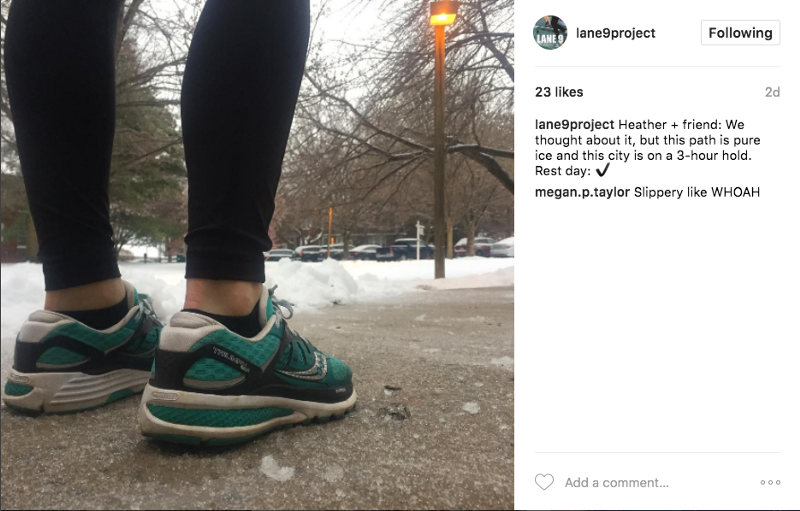“Marathon training run: Done! Earned my Christmas feast!”
“Out for a run on Christmas Day–miles before meals amiright?!”
“Twelve miles on Christmas Day! Time to go enjoy my pecan pie!”
-Instagram, (potentially) ruining your holiday relaxation since 2010
I didn’t run twelve miles on that Christmas Day. In fact, I wasn’t able to run any miles. Plagued with my first ever running injury, I was sitting on the couch in my pajamas, digesting Christmas morning pancakes, and noticing an amplifying anxiety as I scrolled through and read Instagram. Everyone else got to go running. If not a run, someone got in a strength video, home yoga, hill repeats, or maybe a bike ride. I hated that I couldn’t do any of those things (doctor’s orders).
Prior to scrolling through this feed of everyone exercising on their holiday, I felt fine about my pancakes, couch, and pajama situation. After, I felt unsettled. Frustrated. Bloated. Stuffed. Something akin to my eating disorder days. One side of my brain tried to convince me I had to find a way to exercise like everyone else did; the other knew that I couldn’t, and was okay with it.
This is recovery, in a nutshell.
The nuances of recovery are different for all of us, but a unifying theme is that social media makes it hard. No matter what stage of recovery we’re in, comparison comes too easy. The person who posted about their twelve miles and their pecan pie didn’t know that my right knee was injured. They didn’t know that I couldn’t run at all. They didn’t know that I sat there staring at that photo, thinking about my pancakes and my zero miles, in angst.
It’s not just on holidays, it’s every day.
Recovery happens every single day. Every day we battle our own mind in an attempt to keep it in a safe place. Every day we protect ourselves from our own struggles. Every day there is something on social media with high potential to trigger disordered eating or disordered exercise thoughts.

